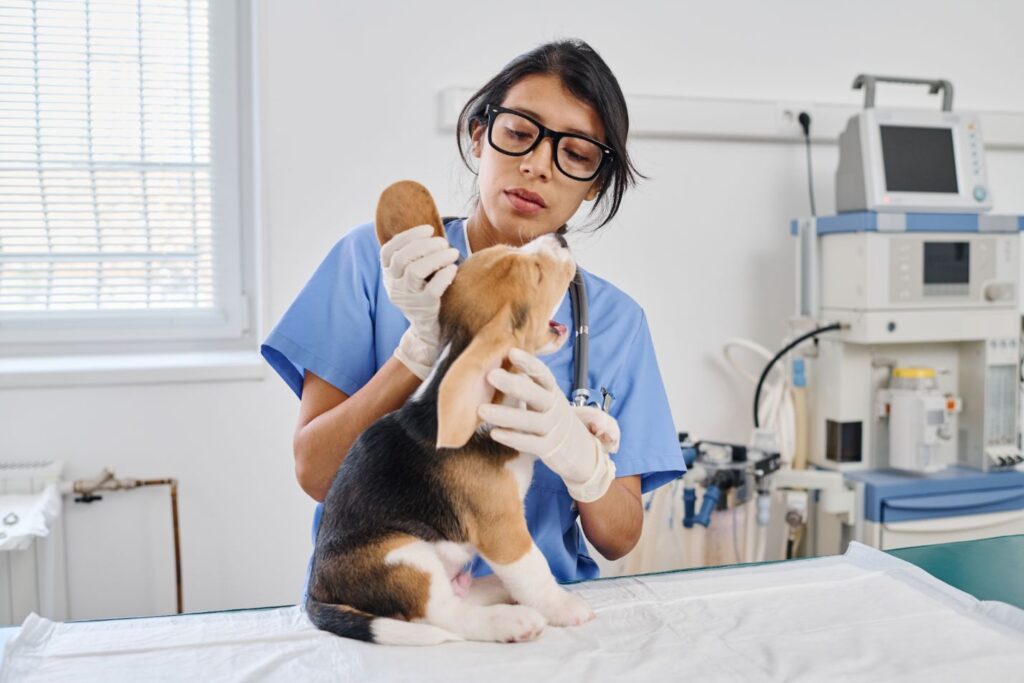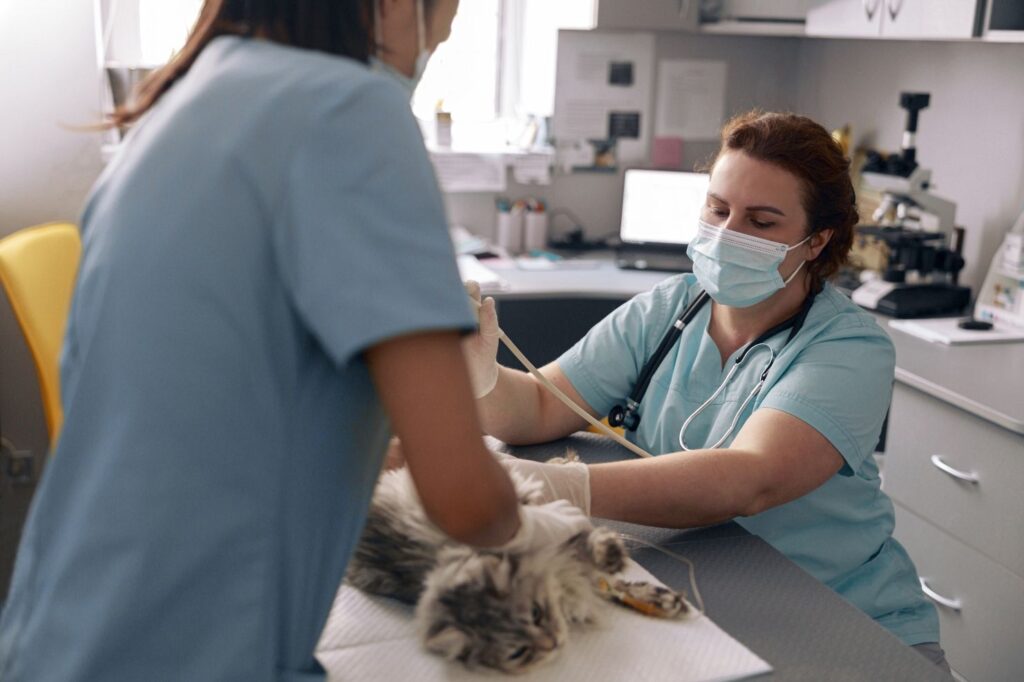Table of Contents
Products containing boric acid are widely considered effective in eradicating fleas and other common insects. That explains their extensive usage in controlling pests in cats and dogs.
However, it’s important to proceed with caution while administering boric acid to your furry friends. A little mishap and things could turn awfully wrong.
This article uncovers everything there is to know about boric acid poisoning in pets and what you can do to mitigate the situation if it occurs. But first things first.
What Is Boric Acid?
Boric acid is an acidic compound made up of boron, oxygen, and hydrogen. The acid is known by many other common names, including boracic acid, orthoboric acid, and hydrogen borate. Its molecular formula is B(OH)3.
The term ‘boric acid’ may also be used to refer to any boron oaxoacid besides B(OH)3. Examples include metaboric acid (HBO2) and tetraboric acid (H2B4O7).
Physical and Chemical Properties
Boric acid naturally occurs as the mineral sassolite.
However, most industrially-prepared boric acid exists as colorless crystals. You can also encounter the compound as a white powder.
Boric acid is water-soluble. It’s classified as a weak acid, with values closer to 7 on the pH scale. The acid is also soluble in many other organic solvents, including alcohols. A reaction between boric and alcohols yields borate esters.
Preparation
There are two possible ways to prepare boric acid.
The first option involves reacting borax (sodium tetraborate decahydrate) with a suitable mineral acid. A commonly used acid is hydrochloric acid (HCl). This process produces sodium chloride and water as by-products, as illustrated below;
Na2B4O7•10H2O + 2 HCl → 4 B(OH)3 + 2 NaCl + 5 H2O
The second preparation method entails hydrolyzing boron trihalides and diborane. This is a two-part process that typically proceeds as follows;
B2H6 + 6 H2O → 2 B(OH)3 + 6 H2
BX3 + 3 H2O → B(OH)3 + 3 HX (X = Cl, Br, I)
Applications
You’ve most certainly encountered boric acid in insecticides. The acid has been used in the United States since 1948 to control a wide spectrum of insects, including cockroaches, fleas, termites, silverfish, and fire ants.
Boric acid also contains powerful antibacterial properties. The acid is commonly used as an antiseptic for minor cuts and burns.
Industrially, boric acid is a common raw material in the manufacture of numerous products. These range from fiberglass to flame retardants, cleaning agents, paints, jewelry, ceramics, etc.
Is Boric Acid Safe For Pets?
Boric acid may be an effective insect repellent. But the compound is considered toxic to pets and even humans.
Therefore, it’s important to proceed with extreme caution while handling products containing boracic acid. That’s especially if using such products in a household with pets and young children.
What Does Boric Acid Poisoning In Pets Look Like?
The best way to predict the effects of boric acid on pets is to begin by understanding how this compound kills insects.
Boric acid creates stomach poisoning when ingested. That’s due to its ability to impair normal metabolism. The compound also acts as an abrasive to an insect’s exoskeletons when applied in dry powder form.
Now, the potential reactions to boric acid in pets depends on the nature of exposure. Your furry friends can develop boracic acid poisoning by ingesting the compound, aspirating it, or via skin contact. Some of the symptoms to expect include;
a) Gastrointestinal Issues
• Vomiting (vomit is usually blue-green)
• Diarrhea (diarrhea is also typically blue-green)
• Blood in urine
• Blood in fecal matter
• Abdominal cramping or discomfort
• Stomach upset
• Gassiness or flatulence
• Dehydration (caused by excessive vomiting and diarrhea)
b) Respiratory Issues
• Coughing
• Sneezing
• Wheezing
• Labored breathing
c) Dermatological Issues
• Dry skin
• Irritation and itching
• Pain and soreness
• Inflammation
• Skin rash
• Skin discoloration
d) Neurological Issues
• Nervousness
• Depression
• Incoordination due to muscle damage
• Tremors
• Seizures
e) Other Issues
• Oral burns
• Rapid weight loss
• Lethargy
• Fever
• Elevated heart rate
• High blood pressure
• Dilated pupils
• Hypersalivation
• Decreased urine production
How Severe Is Boric Acid Poisoning In Pets?
The severity of boric acid poisoning in pets depends on the amounts consumed. The lethal dosage of boric acid in cats and dogs is 974 mg/kg per kilogram of body weight.
It’s unlikely for a cat or dog to ingest that much boric acid. However, even smaller amounts could still leave your furry friend nursing a host of nasty adverse effects.
It’s also important to note that the symptoms of boric acid poisoning in pets can be acute or chronic.
Acute poisoning occurs when your pet is exposed to a considerably high amount of borate-containing compounds. The symptoms develop pretty fast and can quickly get out of hand.
On the other hand, chronic borate poisoning results from long-term exposure to boracic acid. In this case, the symptoms may take years to develop. But when they do, they usually indicate a potentially life-threatening situation. Note that boracic can damage your dog’s vital organs over time. These include the kidneys, liver, and gut.
Can You Use Boric Acid To Kill Fleas In Pets?
You can. However, you’ll need to ensure your pet doesn’t end up ingesting or inhaling the borate-containing product.
Besides, avoid applying boric acid directly on your pet’s skin. Much less if the skin has open sores. Your best bet would be to sprinkle the powder over the animal’s fur.
Most importantly, always invest in EPA-approved boric acid products and follow the recommended directions of use.
What Should You Do If Your Pet Eats Boric Acid?
First, you’ll want to establish the average amount of boric acid consumed. This might help you predict the severity of the side effects.
Next, determine the nature of exposure. While all symptoms of boric acid poisoning in pets are bad enough, the side effects from aspirating the compound tend to be the most severe.
Most boric acid products contain first aid instructions on the label. You can follow these instructions to administer proper first aid as you prepare to take your pet to the vet for a professional checkup.
Wrap Up
Boric acid is effective against fleas in pets. But that’s only if it’s carefully administered. The compound could become toxic if ingested, inhaled, or applied directly to open skin wounds.
Contacting your vet immediately can help save your pet’s life in the event of boric acid poisoning. But even before matters come to this, try to be proactive by keeping all common borate-containing household products out of your pets’ reach.




